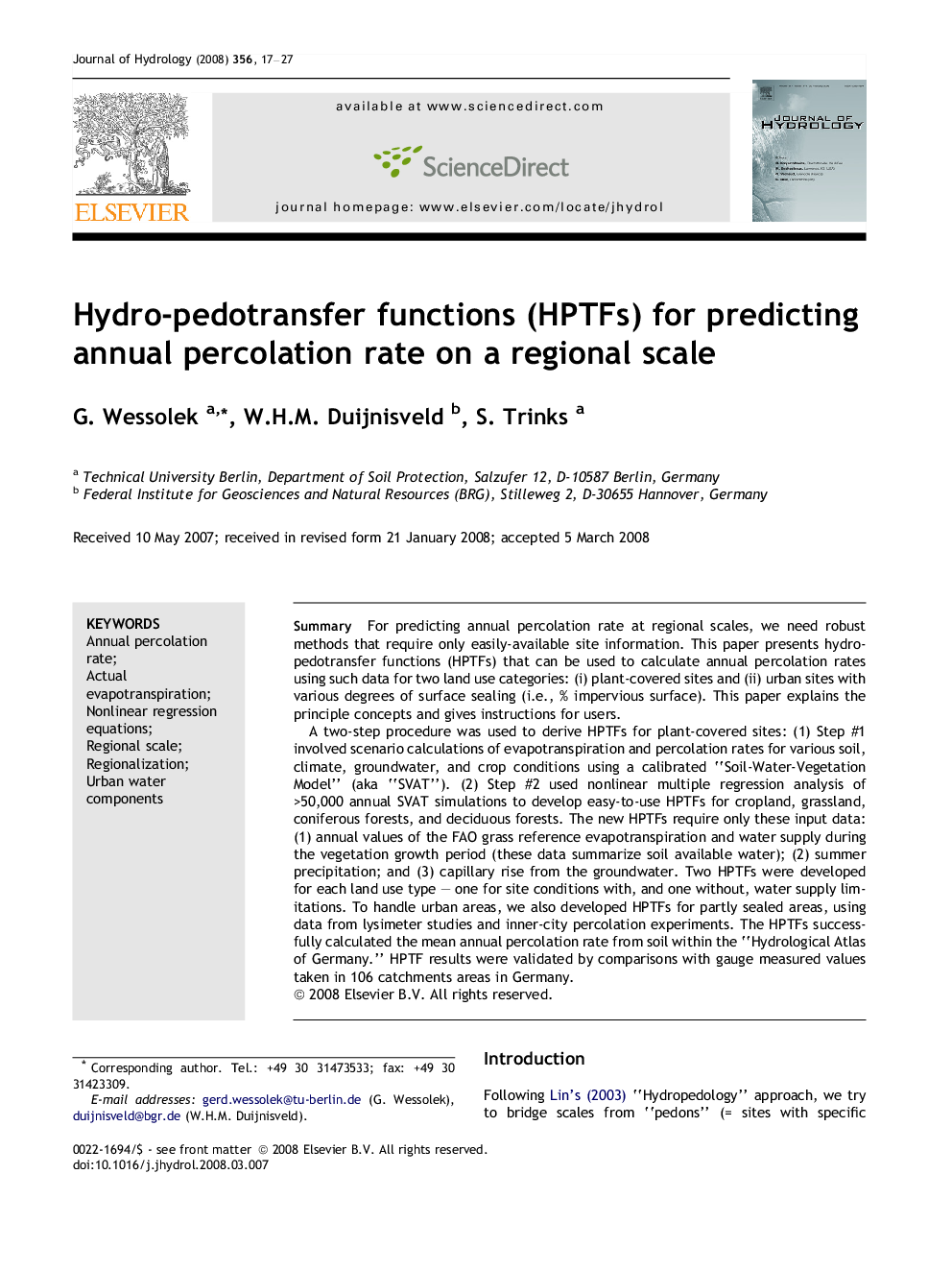| Article ID | Journal | Published Year | Pages | File Type |
|---|---|---|---|---|
| 4579445 | Journal of Hydrology | 2008 | 11 Pages |
SummaryFor predicting annual percolation rate at regional scales, we need robust methods that require only easily-available site information. This paper presents hydro-pedotransfer functions (HPTFs) that can be used to calculate annual percolation rates using such data for two land use categories: (i) plant-covered sites and (ii) urban sites with various degrees of surface sealing (i.e., % impervious surface). This paper explains the principle concepts and gives instructions for users.A two-step procedure was used to derive HPTFs for plant-covered sites: (1) Step #1 involved scenario calculations of evapotranspiration and percolation rates for various soil, climate, groundwater, and crop conditions using a calibrated “Soil-Water-Vegetation Model” (aka “SVAT”). (2) Step #2 used nonlinear multiple regression analysis of >50,000 annual SVAT simulations to develop easy-to-use HPTFs for cropland, grassland, coniferous forests, and deciduous forests. The new HPTFs require only these input data: (1) annual values of the FAO grass reference evapotranspiration and water supply during the vegetation growth period (these data summarize soil available water); (2) summer precipitation; and (3) capillary rise from the groundwater. Two HPTFs were developed for each land use type – one for site conditions with, and one without, water supply limitations. To handle urban areas, we also developed HPTFs for partly sealed areas, using data from lysimeter studies and inner-city percolation experiments. The HPTFs successfully calculated the mean annual percolation rate from soil within the “Hydrological Atlas of Germany.” HPTF results were validated by comparisons with gauge measured values taken in 106 catchments areas in Germany.
